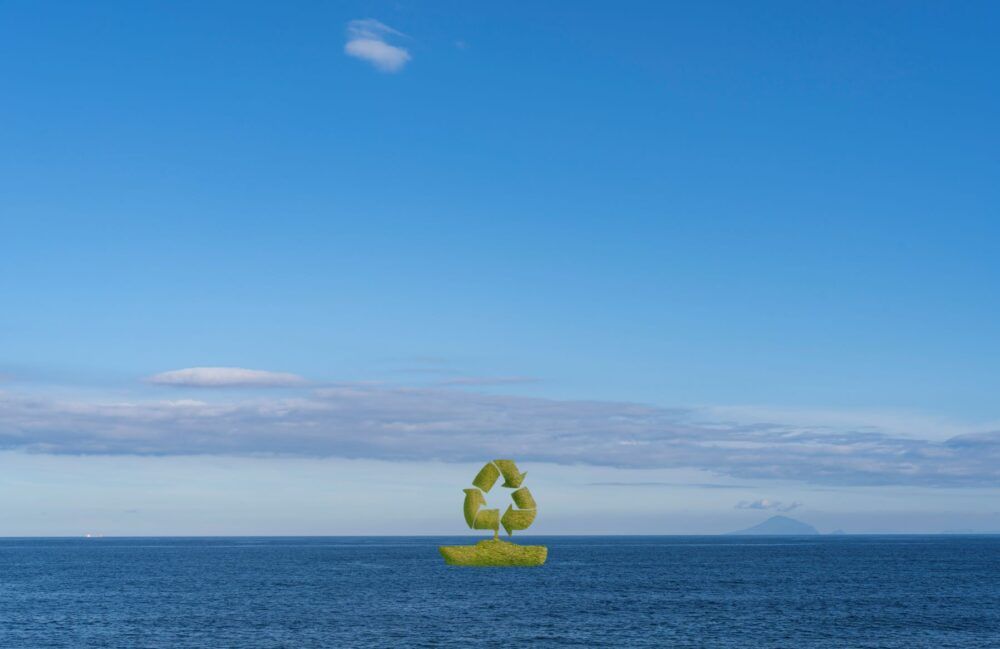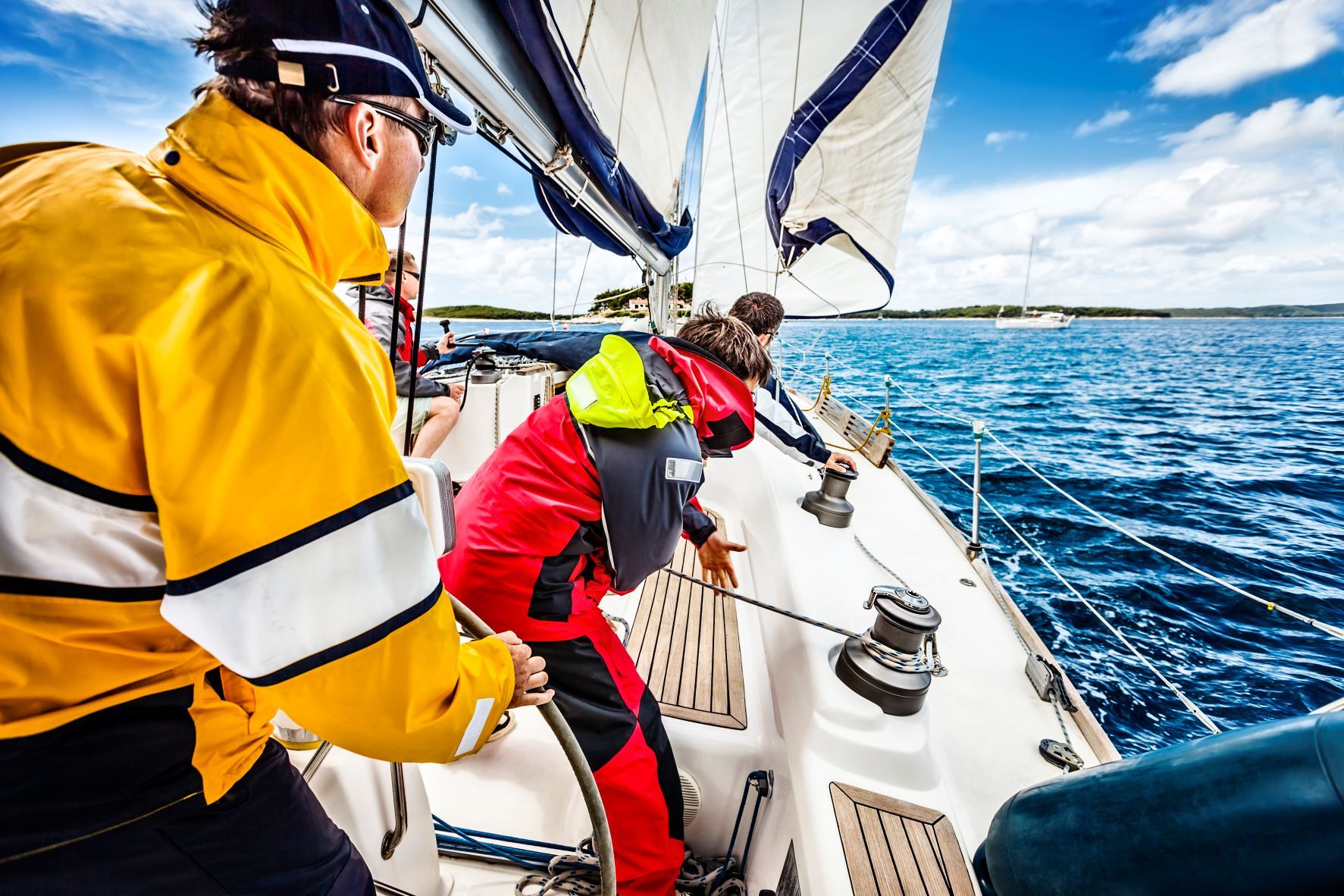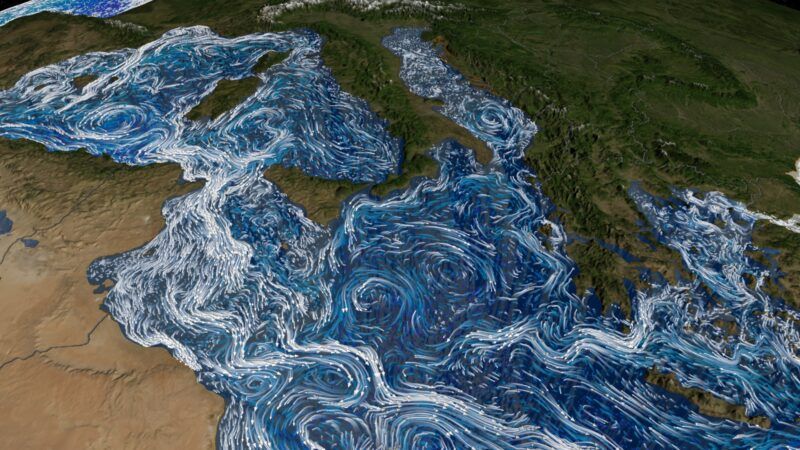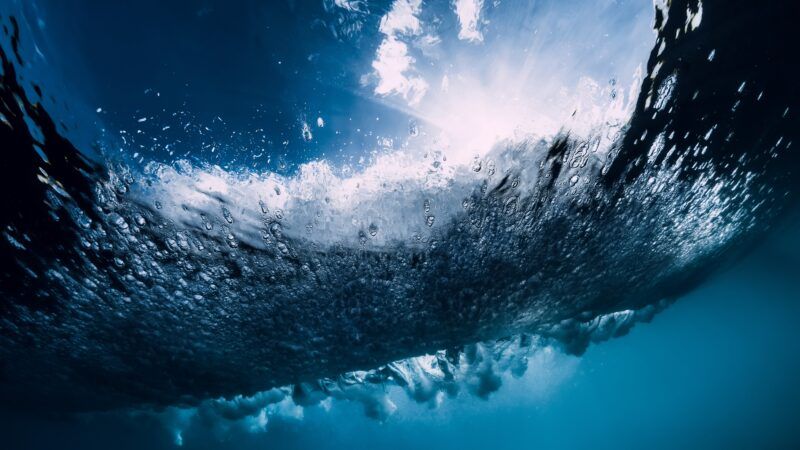 "At the European level there is a fairly clear direction on the blue economy, but the circular part needs to be integrated more because they are two different agendas," says Magali Outters (Getty Images).
"At the European level there is a fairly clear direction on the blue economy, but the circular part needs to be integrated more because they are two different agendas," says Magali Outters (Getty Images).
The Mediterranean seeks to close the circle of the Blue Economy
"No green without blue" is the motto of the Blue Economy. If we add circular economy to this concept, we will be able to close the circle of sustainability without renouncing economic and social wealth. This is what the report 'A Circular Blue Economy for the Mediterranean: current practices and opportunities' proposes.
 "At the European level there is a fairly clear direction on the blue economy, but the circular part needs to be integrated more because they are two different agendas," says Magali Outters (Getty Images).
"At the European level there is a fairly clear direction on the blue economy, but the circular part needs to be integrated more because they are two different agendas," says Magali Outters (Getty Images).
The report, produced by the CPMR Intermediterranean Commission and MedWaves, with the contribution of Plan Bleu, aims to explain and showcase the development of the circular economy in specific sectors of the blue economy in the Mediterranean Sea.
The report was officially presented in Barcelona at the conference "Fostering Circular Blue Economy in the Mediterranean" and PierNext spoke to one of its authors, Magali Outters, Head of Policy at Medwaves, to analyse its main conclusions.
“The blue economy is already well developed," explains Outters, "although the main debate focuses on whether or not to include the word sustainability in sectors such as resource extraction which, although it is not a sustainable practice, is included in the blue economy."
Indeed, according to "The EU Economy Report 2021", the blue economy in Europe creates up to 4.5 million jobs, generates a turnover of around 650 billion euros and a gross added value of 176 billion euros.
As for specific initiatives on circular economy, Magali Outters says that there are very interesting examples, but that "we are at the beginning and there is a lack of dissemination" to expand the number of projects and their scale. "There are many pilot projects, but to generate an impact they should be multiplied and their scalability should be funded," she adds.
Blue economy in the Mediterranean
"At the European level, there is a fairly clear direction on the blue economy, but we need to integrate the circular part further because they are two different agendas. We have a very important cooperation framework which is the Barcelona Convention, which brings together the 21 countries that have access to the Mediterranean, plus the European Commission. Within the framework of this agreement, there is a clear priority on the blue and circular economies and the countries have asked for support to implement these issues at national level," Outters explains.
Building on the first Union for the Mediterranean (UfM) Ministerial Declaration on the Blue Economy of 2015, a second declaration was adopted by the 42 Euro-Mediterranean countries on 2 February 2021.

The blue economy: the new sustainable revolution... public and private
The application of circularity in the maritime sector is in an "embryonic" state compared to sectors such as textiles, food or construction.
To get the necessary push, both the public and private sectors need to promote circular practices in the blue economy. "Politicians must define the strategy, standards and norms and provide the economic tools or funding to promote these activities," explains Magali Outters.
As for the private sector and companies, incorporating these principles means developing a "very important" change in their business models. "It is essential to create this coordination between public and private entities, but scientists and universities must also be involved because a lot of innovation is needed, especially in blue trade issues. Not forgetting civil society and consumers," she added.
Opportunities of the Circular Blue Economy in the Mediterranean
The good practices identified are structured around 7 fields of action of the circular economy principles:
- Eco-design: biodegradable fishing/aquaculture equipment; recyclable composites/fibres; integrated aquaculture.
- Repair: use of second-hand or out-of-stock or out-of-season parts for recreational boats.
- Reuse of waste from fisheries and aquaculture and end-of-life vessels.
- Reduction of greenhouse gas emissions in ports/marinas.
- Up-cycle: use old sails and fabric scraps for new products.
- Recycle marine waste collected during fishing operations, oil in marinas, waste in ports, fibreglass products, end-of-life boat parts and components.
- Digitalisation as an enabler of the circular economy. For example, to save energy consumption in marinas.
Challenges of the Circular Blue Economy in the Mediterranean
According to Outters, the first challenge is to understand the meaning of circular economy.
"One thing we have detected in the case studies that already exist is that they focus a lot on the end of the value chain. There are fewer examples of recycling, reuse and repair," she shares.
The key word in the circular economy is eco-design because its principle is to generate neither waste nor pollution. According to Outters, this is how environmental impacts can be influenced and reduced by up to 80%.
An example would be to avoid materials such as fibreglass in recreational boats and opt for materials that are recyclable.

European funding
To finance the different initiatives, the European Commission and the European Investment Bank Group will enhance their cooperation for a more sustainable blue economy. These institutions will work with Member States to finance projects that help reduce pollution in Europe's seas.
The new European Maritime, Fisheries and Aquaculture Fund (with €6 billion for the period 2021-2027) will support - primarily through its BlueInvest platform and the new BlueInvest Fund - the transition towards more sustainable value chains based on seas and coastal activities.
The Commission has also urged Member States to include investments for a sustainable blue economy in their national resilience and recovery plans, as well as in national operational programmes for various EU Funds and in other EU programmes, such as Horizon Europe.
Which sectors of the blue economy can close the loop?
The sectors identified as potentially most interesting for applying the circular economy are the following:
- Fisheries and aquaculture. These two sectors offer great opportunities for the application of the circular economy at all stages of the product life cycle. Many examples of integrated aquaculture farming processes and reuse or recycling of fish waste can be found. The report highlights the results of the BLUEfasma project, which aims to support the development of the circular economy in this sector.
"There are many opportunities in fisheries and aquaculture, which also belong to the food sector and offer many possibilities for growth and closing the loop in by-products such as fish processing or aquaculture systems to become more circular," says Outters.
- Port systems. Ports offer circular economy opportunities in the following categories: circularity in port assets and equipment and circular material flows within their facilities.
"They are hubs of innovation and we have seen very interesting initiatives being developed, especially in Northern Europe, but which could be exported to the Mediterranean. At the Port of Barcelona this is a topic that is moving a lot, especially in collaboration with start-ups," she says.
- Shipbuilding and ship repair. These sectors have an enormous potential to develop circular industrial models for repair, maintenance, refurbishment, dismantling and component collection.
- Recreational boating and yachting. In this sector, the circular economy approach is driven by innovative recyclable composites such as rComposite for fully recyclable leisure boats, the collection and dismantling of end-of-life boats or the trade in spare parts, an activity carried out by Cap'tain Chercheur.
The key word in the circular economy is eco-design because its principle is to generate neither waste nor pollution. The report identifies 4 sectors of the blue economy where this practice can be applied
Ports and the circular blue economy
Most of the world's major ports see the circular economy as a way to address their own sustainability challenges.
There are several port projects to maximise the lifetime of products, materials and resources and minimise waste generation, especially for metals, plastics, concrete and biomaterials, such as the LOOP-Ports project.
The Chantier Naval de Marseille (CNM), located in the eastern part of the Port of Marseille, was created in 2010 as a subsidiary of the Italian shipyard San Giorgio del Porto as a ship repair centre. Following an investment of 10 million Euros in 2017, it has become a Mediterranean hub for ship repair and refitting for the shipping industry.
Fornaes Ship Recycling, located at the Port of Grenaa in the middle of Denmark, is a well-known company for scrapping ships and all kinds of marine equipment. Since 1993, the company has scrapped over 1,500 ships and vessels, mostly from Scandinavia and the United Kingdom. To date, they have Northern Europe’s largest stock of used ship equipment and marine machinery.
In the case of the Port of Barcelona, several circular initiatives are under development:
- The collection of 100,000m3 per year of ship-generated waste that is transported to Tradebe's treatment plant, located on the port's premises. There, the waste is separated into phases that are treated separately and refined to obtain a recycled fuel that contains the parameters of the original so that it can be used again in maritime transport.
- Use of residual cold generated by the Enagas plant during the regasification process of liquefied natural gas (LNG), which is stored in a liquid state at 160° below zero, before being injected into the distribution network. The residual cold will be distributed at two temperatures: at 15° below zero for industrial refrigeration and at 5° for residential uses.
- Re-use of the rubble from the works being carried out throughout the metropolitan area, both outside and inside the port, to fill the new quays.
- Installation of photovoltaic panels at the Moll de Pescadors to create an energy community as part of the Creators project, which seeks to increase the self-consumption of renewable energy and provide service to the different facilities such as the fish market and the ice factory.






